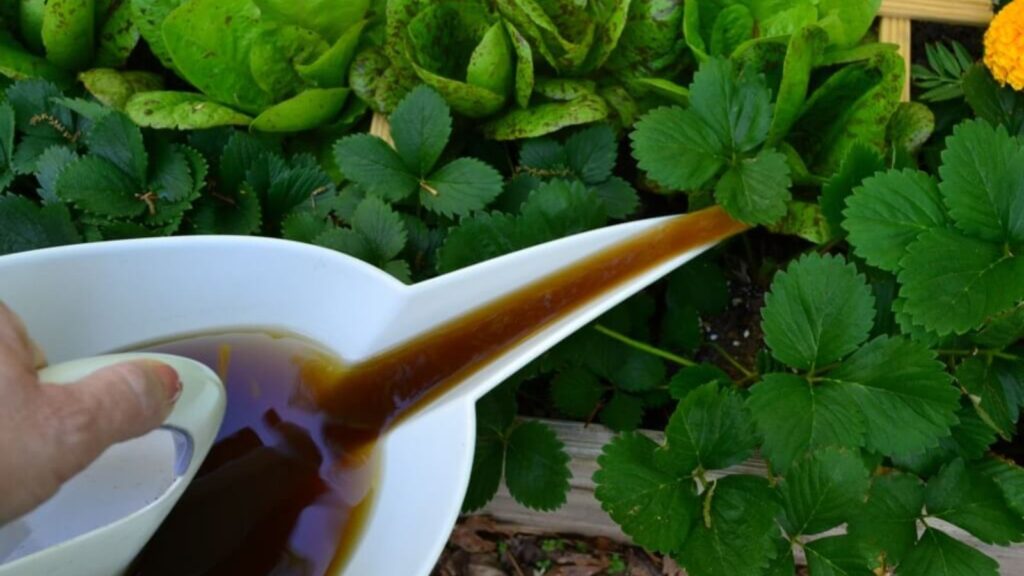Compost Tea: Miracle Brew or Just Murky Water? The Great Houseplant Debate

Believers say it revives drooping fiddle-leaf figs, while sceptics call it nothing more than “brown water” in a jar. Between viral reels and cautious lab reports, compost tea has split the plant world down the middle – turning the humble watering can into a point of contention.
It usually begins with a jar on a windowsill, bubbling like a home science project. A Monstera leans toward the light as a small air pump hums beside a bucket. The smell is earthy, maybe too earthy. One person in a WhatsApp group swears it brought her pothos back to life; another shares a study saying the nutrient content is “minimal and inconsistent.” Somewhere between these two messages, a plant parent hesitates before pouring the concoction – wondering if they’re feeding life or fooling themselves.
The “brown water” mystery
Scroll through Instagram’s #houseplants feed and you’ll find endless videos of amber liquid being mixed into watering cans. Fans claim compost tea stimulates lush growth, reduces pests, and replaces chemical fertilisers. The idea is simple: recycle your compost scraps, brew a nutrient-rich tonic, and help your indoor garden thrive. When it works, it feels magical. When it doesn’t, it feels like hype.
Take Maya from Manchester. She says her calathea pushed out two new leaves after using compost tea for two weeks. She posted her before-and-after clips, full of excitement, to her 5,000 followers. But around the same time, a Bristol plant shop put up a handwritten sign that read: “We love compost. We don’t sell compost tea.” Both posts went viral – showing how divided the community has become.
What exactly is in compost tea?
At its core, compost tea is simply compost soaked in water, allowing nutrients and microbes to leach out. There are two main styles: a passive soak that brews quietly and an aerated version that bubbles oxygen through the mix using a small pump. Supporters say the aerated method grows “good” microbes that boost soil health. Scientists counter that the nutrient levels are often unpredictable and too low to replace regular feeding. Some also warn about bacterial contamination if hygiene isn’t maintained.
That tension – between comforting ritual and uncertain science – keeps the conversation alive.
How to brew compost tea safely
If you want to try it, keep things simple:
- Use mature, earthy-smelling compost – not one that’s sour or slimy.
- Mix 1 part compost with 10 parts rainwater or tap water that’s been left out overnight.
- Bubble the mix with an aquarium pump for 18–24 hours.
- Strain it through mesh or an old cloth, then dilute again 1:10 before using.
- Water only the soil, not the leaves, and discard any leftovers the same day.
Avoid raw manure or spraying it on edible plants indoors. If the brew smells like sewage, it’s gone bad – pour it on your outdoor compost heap instead. Use it once a month during active growth and skip the cold season.
What the experts say
“It’s not a miracle; it’s maintenance,” says a plant microbiologist. “Healthy roots thrive on balance – steady moisture, airflow, and nutrients. Compost tea can support that, but it’s easy to exaggerate its effects.”
A few quick reminders:
- Always clean your brewing tools before and after use.
- Apply the tea to soil only.
- Keep brewing areas away from kitchens and kids.
- If plants seem stressed afterward, pause and go back to basics – light, water, and a good potting mix.
So, does it actually work?
The truth might lie somewhere in between. Compost tea appeals because it feels hands-on, sustainable, and personal – a way to connect with your plants. But results depend heavily on conditions: compost quality, temperature, and how carefully it’s brewed. A healthy-looking plant after a dose might just be reacting to better watering habits, not the tea itself.
Maybe that’s the real takeaway: compost tea isn’t a magic potion, but a mindful practice. When used thoughtfully, it reminds us to pay attention – to the soil, to timing, and to the quiet signals our plants send back.
FAQ
Does compost tea replace fertiliser?
No. It usually contains very little nitrogen, phosphorus, or potassium. Think of it as a mild supplement, not a substitute.
Is it safe for indoor plants?
Yes, when brewed cleanly and used fresh. Avoid spraying on leaves and keep it away from food preparation areas.
How often should I use it?
Once a month during the growing season is enough. Skip during winter.
Why does it smell bad sometimes?
That means it turned anaerobic. Throw it away, clean your equipment, and reduce the brewing time next time.
Aerated vs still?
Aerated teas use a pump to encourage oxygen-loving microbes, while still teas are simpler but more prone to spoiling.
In the end, whether you see compost tea as a “miracle brew” or just murky water depends on what you expect – and how your plants respond. Either way, it’s a reminder that even the simplest rituals can spark big conversations in the plant world.







